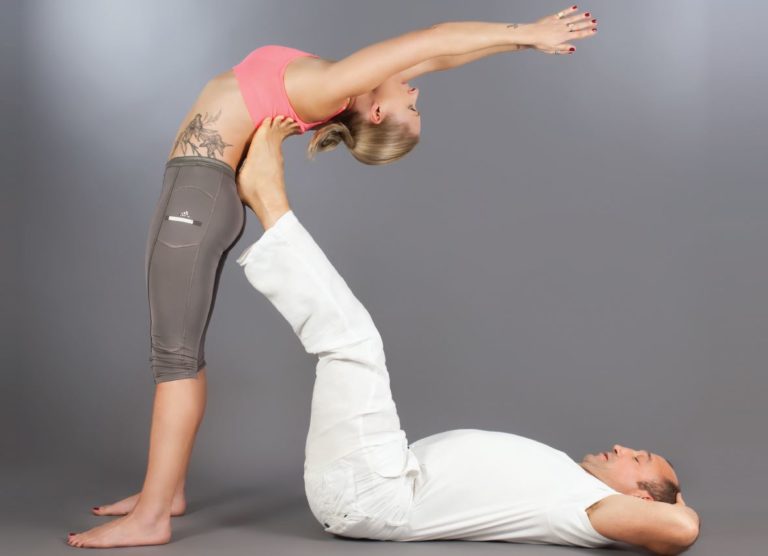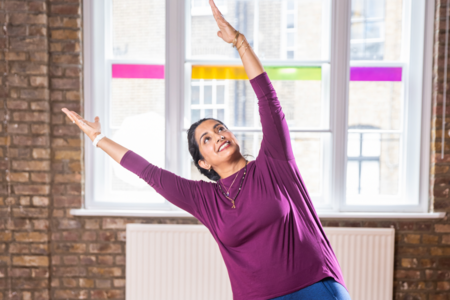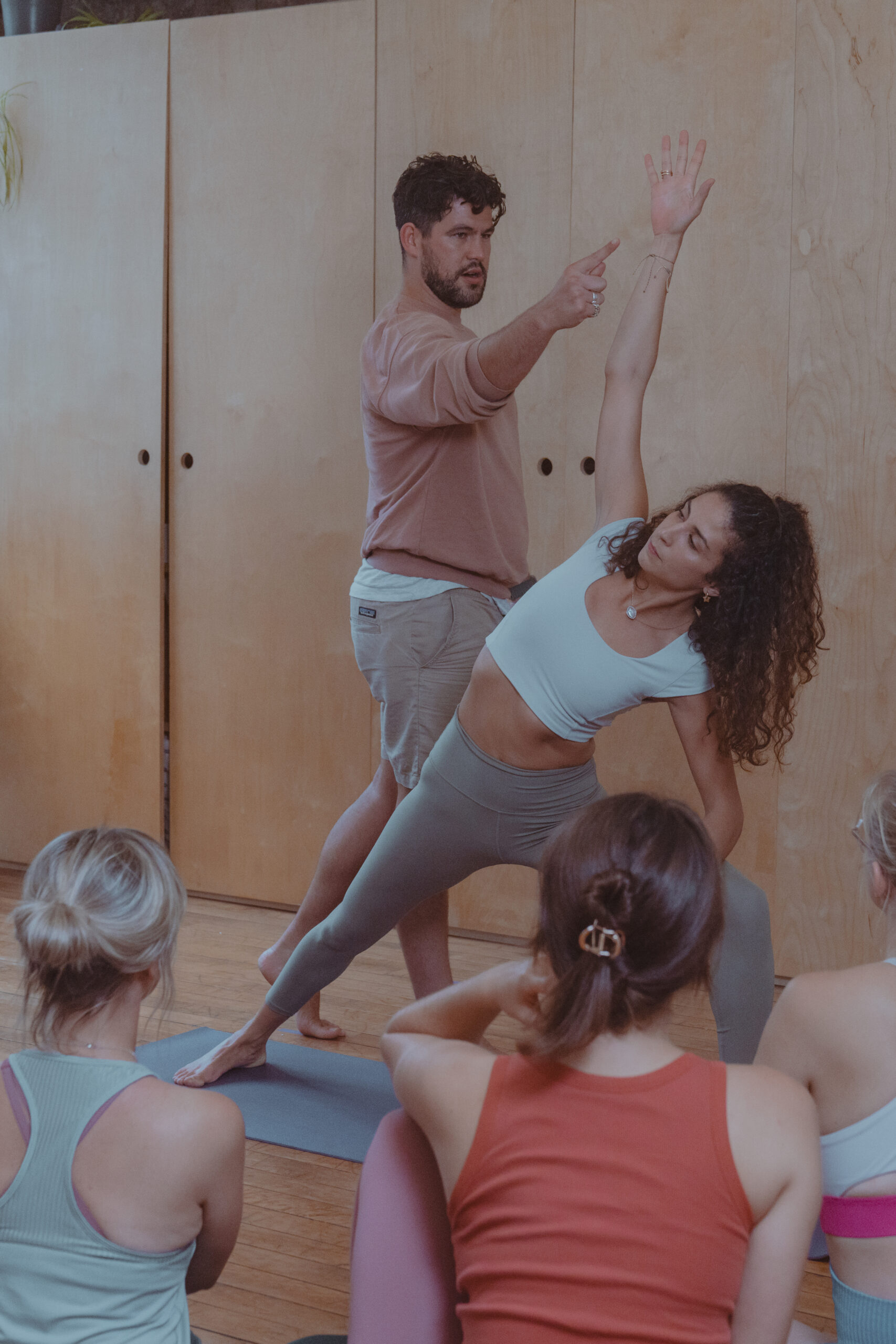The therapeutic effects that yoga can create in us can be very far reaching and are in proportion to the quality and consistency of practice. Benefits range from improved circulation to greater mental clarity to better digestion. One could argue that exercise in general also does this but the mechanism via which such changes are achieved in yoga practice is very different.
Firstly, what distinguishes yoga from other forms of exercise?
The answer can be found by looking at the key elements within yoga theory and practice. The triumph of yoga as a complete mind body discipline is due to the combination of these elements, many of which are acting simultaneously.
- Bandha control – the use of subtle muscular actions to harness energy
- Breath control – the use of the nose to modulate air flow
- Focus on the breath – the use of the breath as a means of concentration and as a barometer of effort
- Breath movement synchronisation
- Asana – physical movements and positions which nurture awareness, concentration and physical attributes like balance, flexibility, etc.
- Drushti – a direction or point of gaze to assist concentration and body position
- Internal focus – the mindful yogi practises with an internal focus based on some or all of the above
- Underlying theory based on the concepts of chakras, nadis, prana, mantras, mudras, and kundalini energy
Many classes also include some pranayama and/or meditation plus a relaxation to finish. The physical movements and postures in yoga help to make sitting still in meditation easier, with the ultimate goal of calming the mind. Additional cleansing techniques or “Kriyas” are also practised by many yogis such as Dauti, Neti, Basti and Nauli.
The Respiratory System
Yoga places a high degree of attention on the breath, probably more than any other mind/body discipline or exercise method. Different methods of breathing can have very different effects on the body, both physically and mentally. A thoracic (chest) breath tends to stimulate the nervous system whereas an abdominal breath tends to calm the nervous system. Each method has its own merits and different styles of yoga tend to encourage one method over the other. A calm but full breath repeated during a typical yoga class boosts energy levels by oxygenating the blood and thus all our organs, tissues and cells. The mechanism by which this occurs is by both moving between postures, holding postures and breathing deeply. Deep breathing supercharges the alveoli of the lungs, diffusing oxygen into the capillaries and blood stream.
With each breath the diaphragm is literally massaging the internal organs as it moves up and down like a piston in the ribcage. The expansion of the body on inhalation also stretches the trunk muscles from the inside out and can even help create space between the vertebrae of the spine. So the breath plays a fundamental role in creating these benefits and distinguishes yoga practice from simple stretching exercises. When specific pranayamas are performed the breath can be manipulated in many ways as a vehicle for producing a calmer, more meditative state.
Savasana at the end of a yoga class acts like a sponge, the body absorbing and integrating the benefits of the practice.This deep relaxation does many things. Most obviously it rests the body and mind and allows for true rejuvenation. Lying still and horizontal on the back rests the cardiovascular system, facilitates the return of venous blood from the legs and gradually lowers heart and breathing rate. This deep relaxation at the end of a class should not be rushed otherwise these benefits may not be fully felt and a calm mental state not fully achieved.
The Cardiovascular System
The vertically upright posture of humans has many challenges. In terms of blood flow, venous blood has to be constantly pumped back up the legs to the heart while at the same time, the brain requires sufficient arterial blood and oxygen to maintain mental faculties and ultimately consciousness. Inversions reverse this arrangement. Venous return from the legs is augmented due to gravity, with additional venous return from the abdomen adding to this waterfall of venous blood converging towards the heart. Inversions are well known for stimulating the digestive “fire” by draining venous blood from the abdominal organs and in so doing, allowing for a fresh influx of oxygen rich arterial blood.
Initially, the heart beats faster and stronger to deal with this additional surge of blood resulting in a rise in blood pressure in the head and neck. This is detected by pressure receptors in the arch of the aorta and the carotid artery of the neck which send a message to the brain that the arterial pressure has increased. The brain then sends a message to the heart to slow down its rate and force of contraction which helps to normalise blood pressure. This can take a minute or more which is one reason why inversions are more therapeutic in terns of lowering blood pressure when maintained for 2 minutes or longer.
Regular practice of inversions can help reduce blood pressure over time. Inversions are however, contraindicated in cases of high blood pressure requiring medication or those suffering from glaucoma. Semi inversions are a good alternative for such individuals as well as therapeutic for anyone unable to perform shoulder stand and headstand. Examples include downward facing dog and a standing forward bend. At the other end of the scale, many individuals have low blood pressure and the sun salutation can improve the body’s ability to deal with this. Often individuals with low blood pressure can feel light headed or even faint. The cardiac reflexes mentioned above can also work in the opposite way – increasing heart rate and blood pressure to maintain good blood flow to the brain as the body moves sequentially into the horizontal plane from the vertical plane and back again.
Regular practice of the sun salutation improves the “efficiency” of these reflexes, enabling moving from lying to standing without disturbances in blood flow to the brain. The lymphatic system also gets a boost from inversions which facilitate the return of lymph towards the heart with the help of gravity. Raising arms overhead helps to create space and improve circulation at the axillary (armpit) lymph nodes and lunge style stretches do the same for the inguinal (groin) lymph nodes.
The Nervous System
The nervous system has essentially two modes of operation – The Para Sympathetic System and the Sympathetic system. Most of the time we are ideally using the parasympathetic system which works during sleep, rest, digestion, etc. The sympathetic system is activated in response to danger (flight or flight response), varying kinds of stress or intense exercise. It speeds up heart rate, releases adrenaline and diverts blood to the skeletal muscles and away from the abdominal organs.
Generally speaking yoga practice will nurture the parasympathetic system and create a calm state of mind. The sympathetic system will operate to some degree during the more strenuous elements of a class but the overall effect should be a calming one. Watch out for breathing too forcefully or squeezing your “mula bandha” (root lock/muladhara chakra) hard as this is associated with sympathetic activity.
Finally, the seal of the savasana at the end of a practice really allows any sympathetic activity to stop and the parasympathetic system to operate unhindered. A more restful, deeper sleeping pattern should be an important benefit derived from a well balanced yoga practice. Good quality sleep will strengthen the immune system and lead to better resistance against disease and illness.
Organs and Endocrine Glands
The basic movements of the trunk in yoga – forward and backward bends plus side bending and twisting help create space in the body for blood flow to internal organs and endocrine glands. For example, forward bends create space in the back body and promote good circulation to the kidney and adrenal (supra renal) gland.
Another good example is the increase in blood flow to the thyroid gland in shoulder stand, plough and variations of these postures. This gland is also associated with Visuddha chakra. In a general sense, back bending helps to stretch the chest and abdominal area, helping to prevent stagnation of blood flow and organ function which can occur with too much time spent sitting in chairs and cars.
The Spine
Yoga practice can improve the alignment of the spine by balancing the left and right sides as well as the front and back of the body (with a balanced practice of forward and backward bends). Standing forward bends help to decompress the discs of the lower spine and inversions do this too.
All movements of the body, particularly deep stretches, also stretch nerves too (in a healthy way). As spinal nerves exit the spine between the vertebra, many go on to form nerve plexuses (networks) which correspond with the location of chakras in the body. For example, the nerves of the lower thoracic spine form the mesenteric plexi of the abdomen one of which forms the celiac or solar plexus, corresponding with the Manipura chakra.
As the spinal nerves exit the spine, joint stiffness may compress part of a nerve and have a detrimental effect on the plexi/chakra and therefore organs to which they supply. (This is the main principle of osteopathy). So keeping the spinal nerves free moving as they exit the vertebral column is important and is facilitated by a regular and mindful yoga practice.
To complete this article, I would like to mention the importance of savasana again, this time with regard to the spine. Firstly, it relaxes the spine by allowing the benefits of asana practice to consolidate as the body cools down with spinal discs and joints unloaded. Lying on the back at the end of a practice can help reduce excessive spinal curves in a front to back direction e.g. over arched lower back and/or rounded upper back.
Some individuals feel the need to lie with legs bent while lying on the back. This is either due to an excessive arch in the lower back or tight hip flexors but often both are usually present together. So the ground, with the help of gravity and body weight, is helping the spine to flatten out a bit plus integrate the realignment (left to right) of the spine achieved by the practice. The muscles and fascia of the body are also stretched and kept healthy due to both rhythmic contraction and stretching experienced when doing yoga.
Tim Goullet has taught osteopathy for over 20 years at the British College of Osteopathic Medicine and co-authored the book “Healing Yoga” with Liz lark in 2005. Tim provides osteopathic treatment at Camden and Chelsea Triyoga studios and is teaching a workshop on 25th November in triyoga soho…
balancing flexibility with strength










